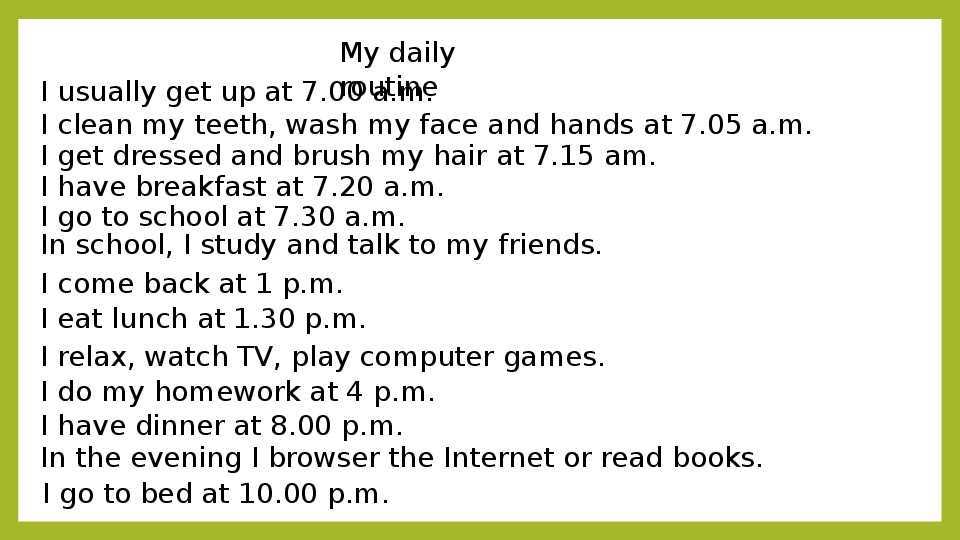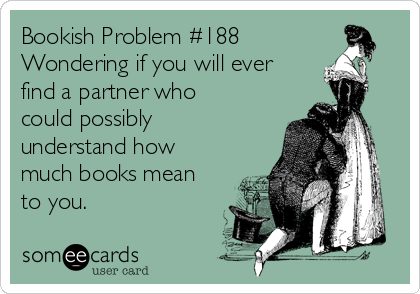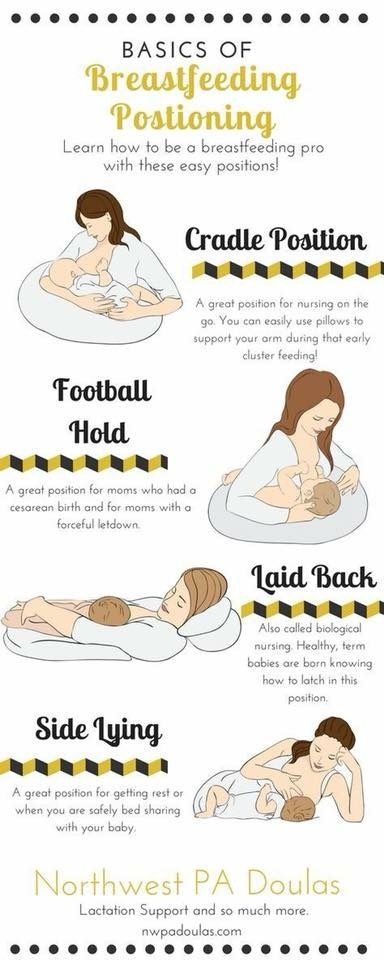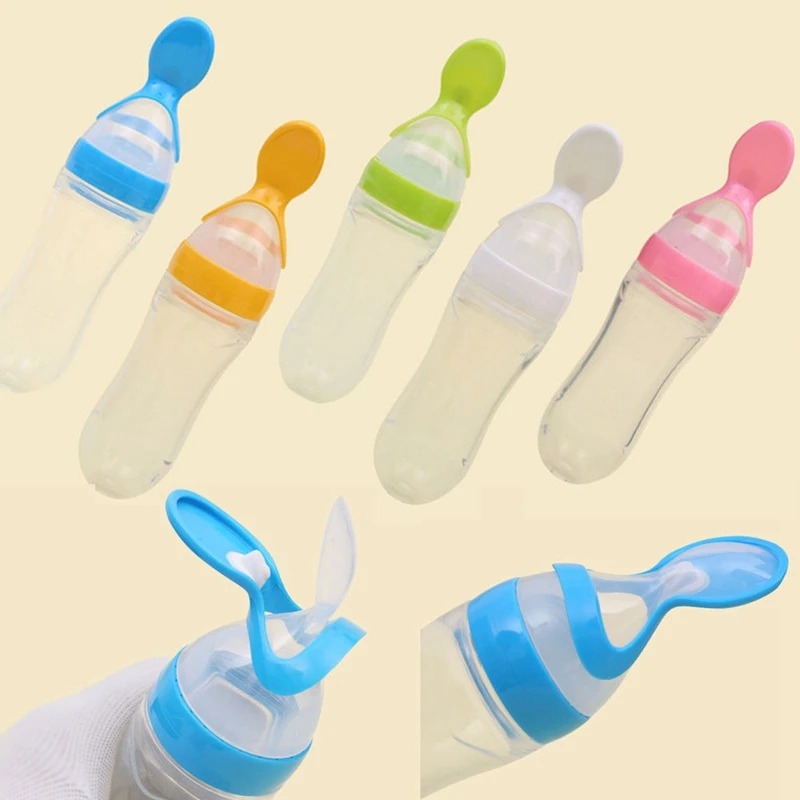How long after feeding can i lay my baby down
Holding Your Baby Upright After Feeding? Stop! It Doesn't Help
Spit happens! Even people who have not spent much time with babies know that spit up comes with the territory. But did you know that more than 2/3 of babies spit up regularly? More often than not, spit up is nothing to worry about. There are some tried-and-true methods out there that help reduce the frequency of spit up in babies. There are also some very common misconceptions. And, contrary to popular belief, holding your baby upright after a feeding doesn’t help. In this blog we will discuss:
- why babies spit up.
- the difference between spit up and vomit.
- when to worry about spit up.
- why holding your baby upright after a feed is not necessary.
- myths and truths to reducing spit up.
Why do babies spit up?
Spitting up is physiologically appropriate in babies. This is because the lower esophageal sphincter (LES) has not fully matured – and doesn’t until around 18 months of age. You can, however, expect to see a decrease in spit up as baby gains core control (ie when they begin sitting up). The floppiness of this sphincter is why you may notice your baby spitting up over an hour after they’ve finished feeding.
Your baby may also spit up if they have had too much to drink and their stomach is full. The excess fluid can put additional pressure on the LES, leading to spit up. You can compare that to feeling ‘uncomfortably full’ after a holiday meal. However, you don’t spit up your food because your LES is fully matured.
What is the difference between spit up and vomit?
Spit up and vomit are not the same. The distinction between the two has nothing to do with the volume of fluid that is ejected. Spit up tends to leave your baby’s mouth at a slower speed; it may even dribble out. This can happen when you’re burping your baby. Vomiting is a forceful event. The liquid projects out from the mouth and may travel several inches.
When should I worry?
Every baby is different. Keep in mind, it may appear that your baby has spit up an ‘entire feed’ but the amount of spit up usually looks like more than it actually is.
Keep in mind, it may appear that your baby has spit up an ‘entire feed’ but the amount of spit up usually looks like more than it actually is.
Typically if your baby is continuing to gain weight and doesn’t seem bothered by spitting up, it is not a reason to worry. These babies are often dubbed “happy spitters” and the spitting up is more of a “laundry problem” than a medical one.
If you feel your baby is spitting up excessively, I definitely recommend calling their pediatrician. Other scenarios which may be a cause for concern include:
- when it occurs after every feeding.
- if your baby is not gaining weight.
- if the spit up looks like anything other than milk/formula (undigested or partially digested). This includes spit up that is green, yellow, bloody, or looks like coffee grounds.
- a baby who cries for more than 3 hours daily and is irritable.
- if spitting up begins after your baby turns 6 months old.
Why isn’t holding your baby upright after a feeding necessary?
I realize this idea may be different than what you’ve heard in the past, but hear me out. It takes approximately 2 hours for your baby’s stomach to empty. While holding your baby upright for 30 minutes after a feeding may allow for some of the feed to leave the stomach, the majority of the feed remains in their stomach after that time. When you lay your baby down, their immature LES could still open, causing them to spit up.
It takes approximately 2 hours for your baby’s stomach to empty. While holding your baby upright for 30 minutes after a feeding may allow for some of the feed to leave the stomach, the majority of the feed remains in their stomach after that time. When you lay your baby down, their immature LES could still open, causing them to spit up.
So unless you are holding your baby upright until their stomach is completely empty, the chance of them spitting up still remains. Now if you were to hold them up until their stomach emptied, you would bring yourself to the time of their next feeding. This strategy would be grossly inefficient. It would result in you getting no rest, or your baby getting into the habit of having to be held or worn at all times.
You may wonder about propping your baby up to reduce spit up. It is unsafe for a baby’s sleep surface to be elevated (that means those crib wedges are not a safe option). Products like nursing pillows, baby loungers, and bouncy seats put your baby at risk for positional asphyxiation. And they don’t diminish the incidence of spit up!
And they don’t diminish the incidence of spit up!
Myths and Truths to Reduce Spit Up
Many pediatricians will, wrongfully, recommend switching to formula because it is “heavier” than breastmilk. The heaviness only means it takes longer to digest than breastmilk, not that it will be less likely to come back up. And adding rice or oatmeal cereal to the bottle will not help reduce spit up either (but it can create a choking hazard!).
The best ways to help reduce spit up in your baby include:
- avoiding overfeeding.
- burp your baby, well, during and after feeding. Trapped air in the stomach can increase the incidence of spit up.
- avoid rigorous activity soon after a feed.
- if you’re bottle feeding your baby, opt for a slower flow nipple. This helps baby to recognize when they are full before they become overly full.
Other Blogs You May Like
What is the Best Bottle?
Does Breast Milk Cause Cavities?
Pass the Bottle, Please!
The information contained in this blog is the opinion of Rebecca Tucci, certified doula and lactation counselor. It is not meant to take the place of consultation with your child’s healthcare provider. The above information cannot diagnose, treat, cure, or prevent any disease or condition.
It is not meant to take the place of consultation with your child’s healthcare provider. The above information cannot diagnose, treat, cure, or prevent any disease or condition.
Breastfeeding FAQs: Sleep - Yours and Your Baby's (for Parents)
Breastfeeding is a natural thing to do, but it still comes with its fair share of questions. Here's what you need to know about making nights easier for you and your baby.
Where Should My Baby Sleep?
It’s a good idea to put your baby to sleep in your room without sharing a bed. That’s because bed-sharing puts babies at risk of suffocation, strangulation, and sudden infant death syndrome (SIDS).
Experts recommend room-sharing for at least the first 6 months of life, especially if you’re breastfeeding. Here are some ideas:
- Put a bassinet, play yard, or crib next to your bed. This lets you keep that desired closeness that makes it easier to breastfeed at night. It also lowers your baby’s risk of SIDS.

- Buy a bassinet or play yard with one side that is lower, which attaches to your bed. This allows you to be next to your baby without the chance of rolling over onto your infant.
Don’t let your baby sleep in the same room as someone who is smoking.
Also:
- Don’t let your baby fall asleep on a product that isn’t specifically designed for sleeping babies, such as a sitting device (like a car seat), a feeding pillow (like the Boppy pillow), or an infant lounger (like the Dock-a-Tot, Podster, and Bummzie).
- Don’t use products or devices that claim to lower the risk of SIDS, such as sleep positioners (like wedges or incliners) or monitors that can detect a baby’s heart rate and breathing pattern. No known products can actually do this.
- Don’t use products that are weighted, such as a weighted blanket, sleeper, or swaddle.
- Don’t use products that have not been approved by the U.S. Consumer Product Safety Commission (CPSC) as meeting federal safety standards for infant sleep products
How Should My Baby Sleep?
Always place your baby on the back to sleep, not on their stomach or side, to help lower the chance of SIDS. When babies can roll over easily from front to back and back to front, it's fine for them to stay in the sleep position they choose.
When babies can roll over easily from front to back and back to front, it's fine for them to stay in the sleep position they choose.
When picking out bedding for your baby, keep these tips in mind:
- Use a firm sleep surface. Cover the mattress with a sheet that fits snugly. Make sure your crib, bassinet, or play yard meets current safety standards.
- Do not put anything else in the crib or bassinet. Keep plush toys, pillows, blankets, unfitted sheets, quilts, comforters, sheepskins, and bumper pads out of your baby's sleep area. Make sure there are no items within reach that could pose a hazard to your baby, such as cords, ties, or ribbons.
- Dress your baby for the room temperature, and don't overbundle. Watch for signs of overheating, such as sweating or feeling hot to the touch.
How Can I Make Nighttime Feedings Easier?
To make nursing in bed more comfortable, keep a donut-shaped nursing pillow on or near your bed or use a "husband" back pillow with arms on each side.
Keep the room dimly lit and any noises (talking, singing, etc.) to a minimum. This will help your baby realize that nighttime is for sleeping — not playing — and can help your baby fall back to sleep sooner.
My Baby Falls Asleep While Nursing. What Can I Do?
Newborns often fall asleep at the breast, especially after feeling satisfied from a feeding. (You'll know if your baby isn't nursing if you don't hear swallowing sounds, like little clicks, or see the jawbones moving.)
If you think your baby is asleep and hasn't finished nursing, here are some tips to try:
- Undress your baby and rub their back.
- Tickle your baby’s feet.
- Burp your baby.
- Change your baby's diaper or switch to the other breast.
- Gently compress (squeeze) or massage your breast at the end of feeding to encourage your baby to drink more.
Babies who latch on wrong may fall asleep at the breast. If this happens, break the suction and reposition your baby onto your breast to include both your nipple and areola. You can break the suction by slipping your finger in the side of your baby's mouth (between the gums) and then turning your finger a quarter turn.
You can break the suction by slipping your finger in the side of your baby's mouth (between the gums) and then turning your finger a quarter turn.
After you've broken the suction, try to burp your baby and switch to the other breast.
Is it OK to Nurse My Baby to Sleep?
In the first few months of life, it's practically impossible to keep a nursing baby awake who is satisfied with a full belly. But as babies grow, encourage them to sleep on their own. To do this:
- Put your baby down for naps and bed slightly awake. This teaches babies to get used to falling asleep on their own.
- Create a familiar and relaxing bedtime routine. Bathing, reading, and singing is soothing and signals an end to the day.
- Be consistent with the bedtime routine. Eventually, babies associate these steps with sleeping.
- Offer a pacifier. Experts recommend giving a pacifier at naptime and bedtime to babies under 1 year old to reduce the risk of SIDS. Only give a pacifier after breastfeeding is established, so no sooner than 3 weeks of age.
 If your little one doesn't want a pacifier, don't push it.
If your little one doesn't want a pacifier, don't push it.
When Will My Baby Sleep Through the Night?
Breastfed newborns' longest sleep periods are generally 2–3 hours — this is about how long their small bellies can go between feedings. If newborns do sleep for a while, they'll probably be extra-hungry during the day and may want to nurse more often.
And just when you think that sleeping through the night seems like a far-off dream, things start to get a little easier. At 3 months, a baby averages a total of 5 hours of sleep during daytime naps and 10 hours at night, usually with an interruption or two. Most babies this age sleep "through the night," meaning a 5-6 hour stretch. But every baby is different, so don't be surprised if your baby sleeps more or less than others.
Will it Hurt My Milk Supply to Let My Baby Sleep?
Letting your baby sleep for longer periods (usually at around 3 months of age) isn't going to hurt your breastfeeding efforts. Your body readjusts your milk supply based on when you nurse and how much your baby needs. Some babies will sleep through the night early but will make up for it during the day, so your breasts will accommodate that.
Your body readjusts your milk supply based on when you nurse and how much your baby needs. Some babies will sleep through the night early but will make up for it during the day, so your breasts will accommodate that.
As your baby matures and starts taking solid foods, the need for breast milk will decrease and your body will adjust for that too.
Reviewed by: Jamila H. Richardson, BSN, RN, IBCLC
Date reviewed: January 2021
REMINDER FOR PARENTS WITH CHILDREN IN THE FIRST YEAR OF LIFE • GBUZ SK "City Clinical Polyclinic No. 5" of the city of Stavropol
bodies, suffocation, drowning, etc.):
• Never leave a child alone in the house.
• Feed the baby in a sitting position. Make sure that the child's nasal breathing is not difficult due to strong pressing against the mammary gland. If the baby is formula-fed, feed him in your arms, make sure that the baby does not swallow air. nine0003 • After feeding the baby, hold him upright to spit up air, and only then put him on his side in the crib.
• Do not give bread crusts, bagels, bagels, pieces of fruit and vegetables, seeds, nuts, or other foods to your baby as this can cause food to be inhaled.
• You need to supervise the baby while feeding. Coughing, noisy rapid breathing, or the inability to make sounds are signs of breathing problems and possibly choking, which can lead to death. nine0003 • Choose a crib with a space between the bars so small that the baby cannot stick his head between them.
• Do not use pillows in a crib, on a changing table. Never put your baby to sleep on a pillow, he may roll over, which will lead to the closing of the baby's airways and suffocation.
• The crib should be free of foreign objects (pillows, blankets, diapers, plastic bags, toys, cords, ribbons, bows, etc.) that can cause entanglement or suffocation. nine0003 • When sleeping, the baby should be placed in the crib on its side.
• Never put an infant to bed with you. You can fall asleep and, if you involuntarily turn, crush the child and block his air supply, which will lead to tragedy.
• When laying the baby on his tummy, be sure to be close to him, remove all objects that can block the baby's air supply (diapers, toys, pillows), lay the baby only on a flat, hard surface. Don't put your baby on your tummy to sleep. nine0003 • In the child's field of activity there should be no small objects (parts of toys, batteries, buttons, coins, balls, sweets, etc.) that the child can take into his mouth, risking choking.
• Soothers with strings, ropes, hanging toys, rope swings can cause suffocation to a child.
• Never leave your baby alone in the tub while bathing, even for a second, babies can drown in less than two minutes even in a small amount of water.
2. TO PREVENT ACCIDENTS CAUSED BY A CHILD FALLING
• Never leave your child alone in the house, even if you have put him to bed.
• Don't trust older children to take care of your child.
• When placing the baby in the crib, check that the sides of the crib are well secured.
• Choose a crib with high sides to prevent falls.
• Do not leave the baby alone on the changing table or other furnishings (bed, sofa, chair, etc.), as the baby may fall to the floor.
• Do not put the child to sleep anywhere other than a cot (avoid sleeping on a bed, sofa, etc.). nine0003 • In the stroller, the child must be secured with special fasteners.
• Make sure that access to the window, the window sill for the child is not possible.
• When using a walker, keep a close eye on the child (avoid obstacles: thresholds, steps, the possibility of going onto stairs, etc.). The walker could tip over and the baby could be seriously injured.
3. TO PREVENT HOUSEHOLD ACCIDENTS WITH CHILDREN (poisoning, burns, cuts, etc.)
• Always measure the temperature of the water with a thermometer (not your elbow!) before placing your child in the bath tub - the child may get burned . nine0003 • Do not add hot water to a baby bath.
• A small child can also get burned when using a heating pad if the temperature of the water in it exceeds 40-60°C;
• Protect your child from sunburn, sunstroke and heatstroke.
• Baby toys must be made of safe, non-breakable materials (risk of injury or choking on small pieces).
• Remove tablecloths, napkins hanging from tables - they can contain heavy, sharp, hot objects and drinks (the child can pull the edge of the tablecloth, tip over objects, injure or burn themselves). nine0003 • Do not allow pets to sleep in a crib or stroller.
• Keep your child away from electrical appliances, electrical outlets, cords, and extension cords.
• Do not leave piercing or cutting objects, such as needles, scissors or knives, within reach of the child. This can cause big trouble.
• Keep medicines and household chemicals, acids and alkalis, poisons for rats and insects, and other toxic substances out of the reach of a child. Poisons are dangerous not only when swallowed, but also when inhaled, in contact with the skin, eyes and even clothing, they can cause severe poisoning and death. nine0003 • Carbon monoxide poisoning - extremely dangerous for children and fatal in 80-85% of cases - strictly follow fire safety rules in all places where children are, especially where there is open fire (stoves, fireplaces, baths, etc. ). ).
). ).
Dear parents, remember -
accidents with children of the first year of life (sometimes fatal) - occur through the fault of adults.
Putting your baby to bed: tips and tricks
Author, editor and medical expert - Muraeva Yulia Yurievna.
Views: 207 562
The date of the last update: 06/23/2022 G.
Average reading time: 12 minutes
rhythm sleep baby
How to help your child fall asleep
How to teach a child to sleep in his own crib? nine0003 Bedtime rituals
What are the bedtime rituals?
Sleep is an important part of life, so it must be regular and of high quality 1 . But often the first year of a child's life becomes a real test for parents. Even such a seemingly simple action as putting a newborn to sleep sometimes turns into a task of increased complexity.
The difficulty is that in infants, sleep is still being formed, and circadian rhythms differ from those to which parents are accustomed 2 .
Rhythms of baby sleep
Before birth, the alternation of sleep phases in the fetus is subject to circadian (daily) rhythms and fluctuations in the hormonal background of the expectant mother. After giving birth, it takes time for the child to mature its own regulatory system 2 .
A full-term newborn sleeps an average of 16-17 hours 2 , and the total duration of sleep is not affected by dark and daylight hours 3 .
Babies up to 2 months old have 2 sleep phases 2.3 :
- Active sleep. Starts after falling asleep. This phase is important for the stimulation and development of the central nervous system. During active sleep, you can observe the baby's mobility, rapid eye movements and a weakening of reactions to external stimuli (light, sound, touch).
- Peaceful sleep. Follows the active phase. During restful sleep, the heart rate slows down, the movements of the eyeballs stop, and the baby stops moving his arms and legs.
 nine0108
nine0108
Together these 2 phases form a cycle. Each cycle begins with active sleep followed by restful sleep. The duration of such a cycle is approximately 45-60 minutes 3 .
But the sleep-wake cycle lasts longer. For breastfed babies, it is approximately 1-3 hours, and for "artificial" children, it is 2-5 hours 3 .
Gradually, periods of wakefulness lengthen, and most of the sleep occurs at night 2 :
- By the end of 3 months of life, an uninterrupted night's sleep can be about 5 hours 3 .
- From 2 to 12 months, babies sleep 9-10 hours at night 3 , with daytime sleep divided into 1-4 episodes that can last from 30 minutes to 2 hours 3 .
Sleep regularity and sleep disturbances can be assessed after 6 months, when the child's circadian rhythms are formed 3 .
Although the night sleep becomes longer, each cycle is still accompanied by micro-awakenings (wakings) 2. 3 , after which the baby can fall asleep quickly enough. This is a short-term activation of the central nervous system, which must be distinguished from a full awakening 2 . It is good if at this moment the mother is nearby and helps the child fall asleep again.
Back to Contents
How to Put Your Baby to Sleep
The American Pediatrics Association has developed guidelines for safe sleep for babies. Below are some of them (the full list of recommendations can be found at the link) 4 :
- The best sleeping position is on your back.
- The mattress should be hard enough, and the crib should not be cluttered with things, blankets, pillows.
- No smoking in the nursery.
- If the child sleeps in a cool room, it is better to dress him warmly or put him in a special sleeping bag for babies. He should be warm, but not hot, so it is not recommended to wrap him with a blanket. And in order for the baby to breathe freely, in no case cover him with a blanket with his head.
 nine0108
nine0108
Babies up to 12 months still need to feed at night, so sleeping in the same room with the mother may be necessary to optimize breastfeeding and closer contact 4 . Co-sleeping in the same room with parents does not mean that the child will sleep with them in the same bed, because it does not meet the safety requirements 4 .
Before putting your newborn to bed, also remember that:0081 4 . There are babies who find this soothing, but swaddling can interfere with the baby's breathing because the chest is compressed and the baby cannot take a deep breath 4 . Tight swaddling also increases the risk of a lung infection and can aggravate hip dysplasia. Do not swaddle a baby who is already rolling over from his back to his stomach 4 .
 Other evidence suggests that pacifiers help reduce the risk of respiratory and cardiac problems in infants up to 12 months of age 4 .
Other evidence suggests that pacifiers help reduce the risk of respiratory and cardiac problems in infants up to 12 months of age 4 . Back to content
How to help your baby fall asleep
As the baby develops, fears, anxiety, anxiety may appear when he refuses to sleep separately from his parents and resists falling asleep 2 . The maturation of biological rhythms is facilitated by the environment of the child, the behavior of parents, compliance with the regimen and rules of sleep hygiene 3 .
To ensure quality rest and proper development, parents need to follow the recommendations. Specialists advise following these rules 4 :
- Put the baby to bed in the evening and wake up in the morning at about the same time, despite weekends and holidays 4 .

- Avoid physical activity before bed 4 .
- Limit activities in bed that are not related to falling asleep (playing, feeding), as this interferes with the baby's understanding of sleep 4 .
- Keep the bedroom comfortable - moderate temperature, low lighting, minimal noise, comfortable pajamas 4 .
- Form a laying ritual 5 .
- Follow the diet - the baby should not be hungry or overeating. Before going to bed, you can feed him a little 5 .
- Keep an activity diary so that you can analyze and understand what interferes with your child's sleep 4 .
Back to Contents
How can I get my baby to sleep in his own crib?
There are various techniques to help a child fall asleep on their own, without the help of their parents. They are often used as a non-drug treatment for insomnia (sleep disorder) in young children aged 1 to 3 years 4 . Examples of such techniques are described below. Choosing the right one for your baby should be discussed with a baby sleep specialist. nine0017
Examples of such techniques are described below. Choosing the right one for your baby should be discussed with a baby sleep specialist. nine0017
One way to overcome sleep disorders is through behavioral therapy. It helps to change wrong associations and sleep patterns in a child 4.7 . In behavioral therapy, the abandonment method is used. With him, parents immediately leave the child in the crib and leave the nursery. However, they do not return when they hear his cries or call, giving him the opportunity to fall asleep on his own 4 . But psychologists do not recommend using this approach if the baby is not yet 6 months old and is breastfeeding 4 , as this may adversely affect the baby's condition.
In addition, the abandonment method is not suitable for all parents. For those who want to be near or to calm a crying baby 4 experts recommend other methods - "check and hold" or "gradual repayment" 4.7 .
Back to Table of Contents
"Checking and Holding"
When getting ready for bed, the parent spends some time with the child, then puts him to bed and leaves the room or goes to bed if she is in the nursery. At the same time, they do not approach the baby for 15-20 minutes and do not react to his crying or screaming. This period is called "hold" 7
When the allotted 20 minutes are up, the parent goes to the child, straightens his bed and returns to himself. This part is called checking 7 .
It is very important not to take him out of the crib and feed him when he wakes up. The exception is children who require night feedings for age or medical reasons. In all other cases, the parent simply comes to the crib for a short time to check, and then leaves again for a 15-20 minute “hold” 7 .
Gradually - over several nights - increase the "hold" interval to 30 minutes 7 .
Up to content
Gradual repayment
This technique is designed to “repay” the child's protests and manipulations 7 . There are 2 options for "gradual repayment" - with and without the presence of a parent 4 .
There are 2 options for "gradual repayment" - with and without the presence of a parent 4 .
The classic option is to leave the baby alone in the bedroom for a certain amount of time, gradually teaching him to fall asleep on his own. Unlike the “check and hold” method, the child can be calmed down. But you need to return to his bed not at the first call, but after a certain time. After the child calms down, you need to leave again, increasing the intervals when he tries to fall asleep without you 7 . This option is suitable for babies over 6 months old 4 .
Until the age of six months, use the “gradual repayment” method in the presence of a parent. It is carried out in stages 4 :
- The parent puts the baby to bed and sits next to it. If the bed is large, you can lie down next to the child.
- On subsequent nights, mom or dad still stays with the baby, but gradually reduces the amount of touching, communicates less with him, showing him that they are busy with something, for example, reading or cleaning the room.
 nine0108
nine0108 - When putting the child to bed, the parent does not lie down next to him, but sits on a chair not far from the bed, about 5 meters from it, continuing to sit until the baby falls asleep.
- In the next step, the distance between the bed and the chair is increased, gradually moving it away.
- A little later, you can leave the nursery for a while, but be sure to return before the baby cries.
If the child wakes up, repeat the same steps as in this step of the procedure. The stages can be stretched over several days so that the baby has time to get used to each 4 .
Up to content
Bedding rituals
Forming a bedding ritual is considered to be an effective method 4 . It can complement the "repayment" technique, but sometimes it works quite well on its own. Suitable for all ages, but the earlier it is started, the less likely babies are to develop sleep problems - they fall asleep faster and sleep longer 4 .
The ritual begins at the moment the child is drowsy. Before you put the baby to sleep, you need to perform a number of actions. They should be predictable, regular, relaxing and positive. The total duration of the ritual is 20-45 minutes 4 . If it was not possible to meet the set time, most likely, you need to shift the ritual to another time and wait for drowsiness. It may manifest as loss of interest in surrounding toys and people, reddening of the eyelids, rubbing of the eyes, yawning 4 .
Up to content
What are the rituals for falling asleep?
Experts recommend preparing for sleep, which consists of consecutive, daily repeated actions, the so-called routines 5 . They help to fall asleep faster, improve the quality and duration of sleep, reduce the number of night awakenings 5 .
The most typical nightly rituals 6 :
- Bathing in warm water with your favorite foam or bath product, light massage.

- Soothing sounds - "white noise". This is a monotonous noise that does not carry a semantic load, soothes and helps to forget, for example, flowing water, a metronome, ticking clocks or recordings of nature sounds. nine0108
- Lullabies and fairy tales.
- Wishes for "good night", "sweet dreams" or other phrases that are said only before going to bed.
Sleep experts recommend a three-step ritual that includes bathing, massage and quiet time in the crib 8 .
- Bath foam can be used during bathing. For babies from 6 months, JOHNSON’S ® Baby Bath Foam "Before Bed" is suitable. It has a soothing scent to help your baby get ready for bed 8 .
- Immediately after a warm bath, a milk can be applied to the skin, such as JOHNSON’S ® Bedtime Milk Milk 8 , for children over 6 months of age, by lightly stroking the skin. Such a massage will calm the baby even more and prepare him for sleep, especially thanks to the pleasant smell of milk 8 .

- At the third stage, you need to change the child into pajamas, read a bedtime story or sing a lullaby 4,8 .
As a rule, a few days are enough to form an association between the evening routine and falling asleep 4 .
As you can see, pediatricians and psychologists have developed various methods for healthy children's sleep and fast falling asleep. But you need to use them, taking into account the age of the child, his habits and characteristics of the nervous system. The task of parents is to organize the baby’s daily routine and prepare him for sleep, calming and creating positive associations with the process of falling asleep. With the correct implementation of the recommendations of a specialist, the child will gradually learn to fall asleep independently and faster, will sleep longer and sounder. nine0017
You may also be interested in:
Traveling with your baby
Baby's Skin Care Guide
Back to Contents
The information in this article is for guidance only and does not replace the professional advice of a physician. For diagnosis and treatment, contact a qualified specialist.
For diagnosis and treatment, contact a qualified specialist.
References:
- E.S. Sakharova. What worries the baby? Pediatric pharmacology, 2010, volume 7, No. 2, pp. 143-148. nine0108
- I.A. Kelmanson. Formation of the state of sleep in ontogeny and the problems arising from this. Neurology and psychiatry. Special issue "Sleep and its disorders-5". Effective pharmacotherapy, 2017, No. 35, p.4-13
- M.G.Poluektov, P.V.pchelina. Sleep in children: from physiology to pathology. Medical Council, 2017, No. 9, pp. 98-103.
- P.V.Pchelina. M.G.Poluektov. How to treat insomnia in early childhood. Neurology and psychiatry. Special issue "Sleep and its disorders-4". Effective pharmacotherapy, 2016, No. 19, pp.52-60.
- Jodi A. Mindell, PhD; Lorena S. Telofski, BA; Benjamin Wiegand, PhD; Ellen S. Kurtz, PhD. A Nightly Bedtime Routine: Impact on Sleep in Young Children and Maternal Mood. (The Nightly Sleep Schedule: Effects on Young Children's Sleep and Maternal Mood) SLEEP (Sleep), Vol.












